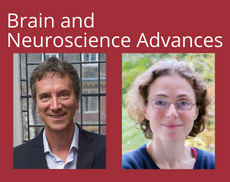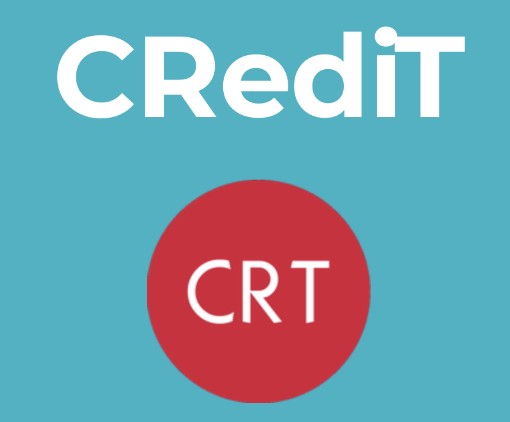Meet (and shape!) your society journal

The official journal for the International Festival of Neuroscience is Brain and Neuroscience Advances - the Gold Open Access, wholly-owned society journal of the BNA.
All accepted poster abstracts will be published in Brain and Neuroscience Advances so poster presenters will be able to fully reference their abstracts in PubMed Central.
 Delegates can take the chance to meet co-Editors-in-Chief Jeff Dalley and Kate Baker (pictured right), and pitch ideas for papers, collections, topics and publications.
Delegates can take the chance to meet co-Editors-in-Chief Jeff Dalley and Kate Baker (pictured right), and pitch ideas for papers, collections, topics and publications.
And come to the journal stand to find out how publishing in Brain and Neuroscience Advances supports your society, your sector, and your career!
Brain and Neuroscience Advances: the Festival journal
We're delighted that all accepted poster abstracts will be printed in the Festival's Gold Open Access journal, Brain and Neuroscience Advances, the society journal wholly-owned by the BNA. Click here for more info about the journal.
With publishing so influential to how research is done, this journal plays a key role in providing a way for neuroscientists to adopt credibility publishing practices. Such practices available at Brain and Neuroscience Advances include the following:
Transparency and Openness Promotion (TOP) guidelines
TOP Guidelines are eight modular standards that journals can implement to increase the transparency of the research they publish. We are part of a growing number of neuroscience journals (including European Journal of Neuroscience, Nature Human Behavior, Journal of Neurochemistry) that are implementing TOP standards (e.g., open data and material sharing, publication of replication studies).
Open Science Badges
We strongly urge all authors to share their data, materials and analysis code, and to preregister their work. In acknowledgement, we award open science badges.
Example of a neuroscience publication that has been awarded open science badges for open materials and open data: J Neurochem, 2019. Metabolic constraints of swelling-activated glutamate release in astrocytes and their implication for ischemic tissue damage. *Open Materials* and *Open Data*
Transparent contribution reporting
 To recognise and acknowledge the diversity of author contributions, each research article at our journal must include a contributions section listing the specific roles of everyone involved. To help reporting this important information, we recommend the CRediT taxonomy.
To recognise and acknowledge the diversity of author contributions, each research article at our journal must include a contributions section listing the specific roles of everyone involved. To help reporting this important information, we recommend the CRediT taxonomy.
See an example of an article that uses CRediT taxonomy at Brain and Neuroscience Advances: Mapping the impact of exposure to maternal immune activation on juvenile Wistar rat brain macro- and microstructure during early post-natal development (2019).
Registered Reports
The Registered Report format aims to improve the reproducibility and replicability of research. Unlike traditional articles, Registered Reports are accepted for publication at the study design stage, prior to work being carried out. This means we will publish your work irrelevant of the outcome. Registered Reports are also awarded a preregistration open science badge.
Example of a Registered Report at Brain and Neuroscience Advances: Effect of apolipoprotein E polymorphism on cognition and brain in the Cambridge Centre for Ageing and Neuroscience cohort.(2020)
Peer Community In Registered Reports
 To strengthen our Registered Reports offering for authors, we have joined the PCI RR initiative, which is dedicated to receiving, reviewing, and recommending Registered Reports across the full spectrum of STEM, medicine, the social sciences and humanities. This links the journal to a peer review community specialising in rigorous review of Registered Reports, while benefiting authors by providing them with flexibility of deciding which of the PCI RR friendly journals to publish in.
To strengthen our Registered Reports offering for authors, we have joined the PCI RR initiative, which is dedicated to receiving, reviewing, and recommending Registered Reports across the full spectrum of STEM, medicine, the social sciences and humanities. This links the journal to a peer review community specialising in rigorous review of Registered Reports, while benefiting authors by providing them with flexibility of deciding which of the PCI RR friendly journals to publish in.
Preregistration
We also welcome the submission of preregistered work, for instance, using the OSF. For this we will award a preregistration open science badge.
Example of an article that was preregistered on a repository before publication in a journal: Neuropsychologia, 2019. For a minute there, I lost myself … dosage dependent increases in mind wandering via prefrontal tDCS.
Publishing null results
Have you conducted a robust study, but your results prove (instead of reject) the null hypothesis? Don’t worry: at Brain and Neuroscience Advances, we publish null results.
Example of an article that publishes null results: PLOS ONE, 2018. Can a single pulse transcranial magnetic stimulation targeted to the motor cortex interrupt pain processing?
